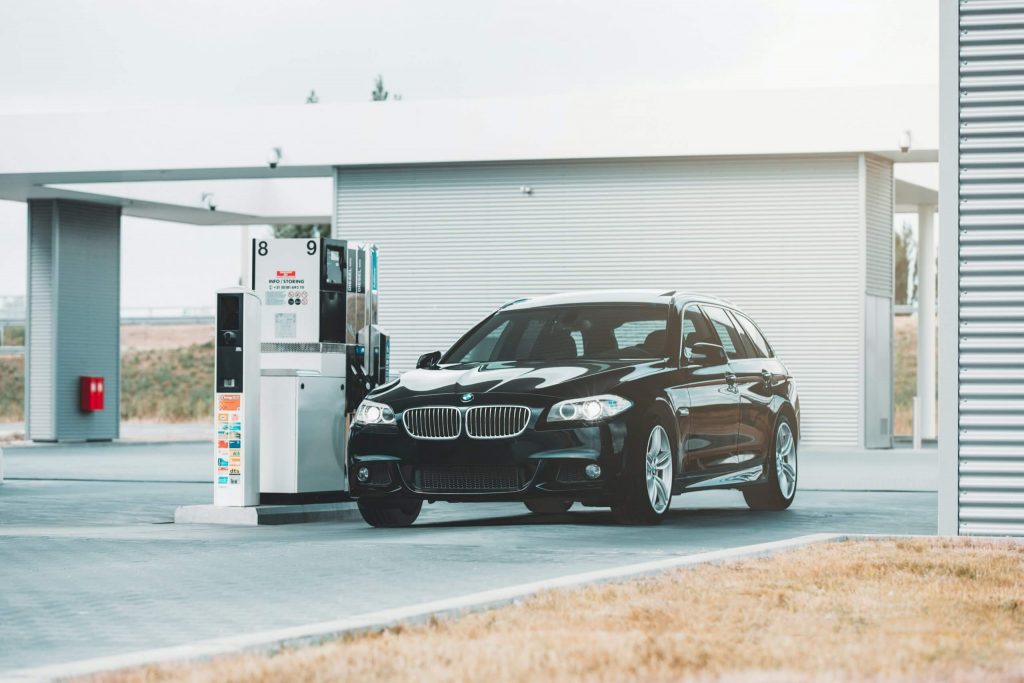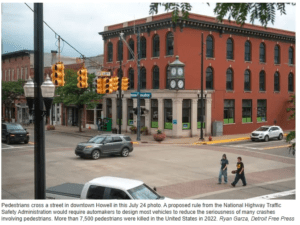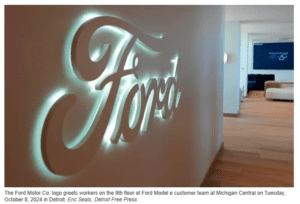6 Tips to Get the Most Out of Your Gas Tank

You pull into the gas station, pop your gas tank cover, fill up your tank, and wince as the numbers race higher and higher. We’ve all been there. Fuel is a necessity that can get very expensive. That’s why we’ve collected 6 of the best ways to get the most out of a tank of gas.
What You Need to Know
Fuel economy (also known as gas mileage) refers to the number of miles a car can travel using a specific amount of fuel and is measured in miles per gallon. For example, if your vehicle gets 30 mpg, it travels 30 miles per one gallon of gas.
Speaking of which, you may be wondering what is considered “good” gas mileage these days. To pull from our example above, 30mpg is a solid fuel economy on an average, non-hybrid, non-electric vehicle. Diesel engines will get you better gas mileage ― 20 to 30% ― because they are more fuel-efficient and have more low-end torque than similar-sized gasoline engines.
A hybrid engine (like in a Toyota Prius) will get you 50 to 60mpgs while electric cars (like the Chevrolet Bolt EV or Hyundai Ioniq Electric) get you mileage in 3-digits (119 mpg and 136 mpg, respectively).
Drive Sensibly
Rapidly accelerating, speeding, and braking quickly are all characteristics of aggressive driving, which can actually lower your gas mileage by roughly 15 to 30% at highway speeds and 10 to 40% in stop-and-go traffic, according to a study by researchers at the Department of Energy’s Oak Ridge National Laboratory. By driving more sensibly, you can save up to $1 per gallon.
If you need some help on this one, try out this 30-day safe driving challenge guide.
Slow Down
In a test performed by Consumer Reports, they found that the fuel economy dropped 4 to 8 mpg while speeding up from 55 to 65. Increasing the speed to 75 cut fuel economy by an additional 5 to 7 mpg.
Once you reach 50 mph, each additional 5 mph you drive is like paying another $0.18 per gallon for gas. Not only will driving within speed limits save you money on gas, but it’ll also save money on potential speeding tickets and, most importantly, keep you and other drives safer.
One way to do this and save some gas is with cruise control. It helps keep your acceleration steady and less wasteful.
Lighten Your Load
Excess weight in your car and even hauling items on your roof can decrease your vehicle’s fuel economy. If that extra weight is in something like a roof-top cargo box you could be making things even worse because these boxy objects increase aerodynamic drag (wind resistance) and lower fuel economy. At highway speeds, more than 50% of engine power goes to overcoming aerodynamic drag. If you need to haul some cargo, see if you can install it to the back of your vehicle instead of the top.
Turn Your Vehicle Off
This tip can not only help you save money on fuel, but it can also help save the environment too. Idling (running a vehicle’s engine when it’s not in motion) excessively can waste gas more than you’d think ― a quarter to a half-gallon of fuel per hour, depending on your engine size and air conditioner use.
A myth related to this is that it wastes more gas turning your car back on than just letting it idle. This is false! It only takes about 10 seconds worth of fuel to restart your vehicle, according to fueleconomy.gov.
As for the environmental side, idle reduction is a simple way to use less fuel and minimize engine wear, reducing costs along with pollution and greenhouse gas emissions, according to the U.S. Department of Energy’s Vehicle Technologies Office.
Refraining from idling also goes for the cooler months when many people start their cars in order to warm them up. Not only is it better for your gas tank and the environment, it doesn’t actually work that well. Engines warm up faster in movement, which allows the heat to turn on sooner, decrease your fuel costs, and reduce emissions. Modern auto manufacturers recommend driving off gently after about 30 seconds.
Turn Off the A/C
Though this tip is harder to do in hotter months, the fact is the harder the air conditioning system has to work, the worse the impact on fuel economy. You can expect a drop from 1 to 4 mpg with the air conditioning running. It’s advised to roll the windows down at lower speeds and to go ahead and use the AC at highway speeds.
Keep Your Tires Properly Inflated
In a test done by Consumer Reports, they found that when the tires were underinflated by 10 psi, a midsize sedan lost 1.3 mpg on the highway. Some believe that overinflating tires increases fuel economy. However, overinflating tires poses safety risks and can wear down your tires faster. That’s why you should always follow the proper tire pressure for your vehicle, which is usually found on a sticker in the driver’s side door jamb or the glove box and your owner’s manual. Properly inflated tires are safer and last longer.
The best way to save money on gas is to follow these tips. The best way to save money on car insurance is to get a free quote from Freeway Insurance. Freeway Insurance can help you shop for the best auto insurance you can get at a price you can afford. Call (800) 777-5620 today to speak to a live agent.







